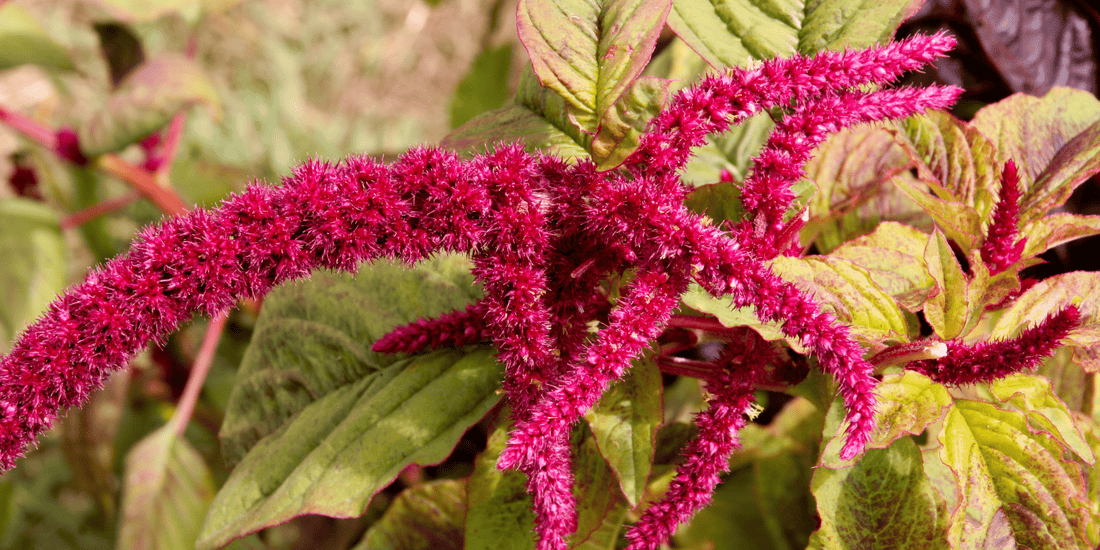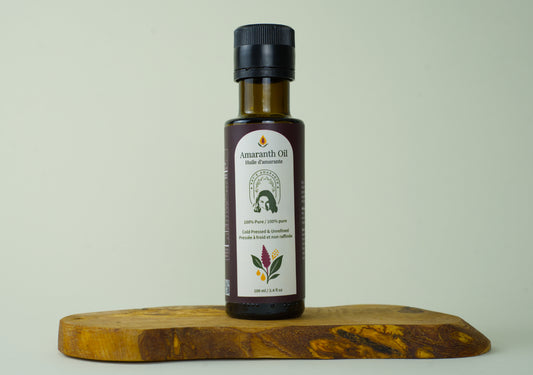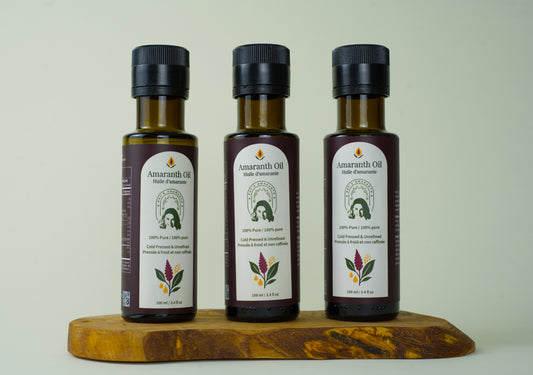
Amaranth, Leaf to Seed: How to Use Every Part of This Powerful Plant
Amaranth has been gaining popularity as a superfood, but most people don’t realize this powerful plant has more to offer than just its grain. The entire plant—from its vibrant, nutrient-dense leaves to its tiny seeds and antioxidant-rich oil—is packed with wellness potential.
If you’re looking for functional, plant-based ingredients to support your gut, hormones, skin, and overall vitality, amaranth is a beautifully versatile option to explore. In this post, we’ll break down each part of the plant and how you can incorporate it into your routine for full-body nourishment.
Amaranth Leaves: Nature’s Multivitamin
Amaranth leaves are edible leafy greens that have been used for generations in Indian, African, and Southeast Asian cuisines. Mild in flavour and similar in texture to spinach or kale, they’re often sautéed, steamed, or blended into meals for a boost of nutrients.
Here’s what makes amaranth leaves so powerful:
- High in iron, calcium, potassium, and vitamin C
- Rich in flavonoids and polyphenols with antioxidant and anti-inflammatory effects
- Naturally protein-rich for a leafy green
-
May support blood sugar balance and overall metabolic health
You can use them just like other greens: lightly sautéed with olive oil and garlic, tossed into soups and stews, blended into smoothies, or served raw in salads when the leaves are young and tender.
Amaranth Grain: The Mighty Seed
Technically a seed but commonly referred to as a grain, amaranth is a gluten-free pseudocereal similar to quinoa. It has a nutty flavor and slightly chewy texture, making it a satisfying, nourishing base for both sweet and savoury meals.
Its nutritional benefits include:
- A complete source of plant-based protein (contains all 9 essential amino acids)
- High in dietary fiber to support gut health, digestion, and blood sugar regulation
- Rich in magnesium, phosphorus, manganese, and iron
-
A good source of lysine, an amino acid that supports tissue repair and immune function
Amaranth can be cooked like quinoa and added to grain bowls, porridges, or salads. You can also pop it for a crunchy topping, bake with amaranth flour, or blend it into smoothies for texture and nutrition.
Amaranth Oil: The Skin-Loving Extract
Cold-pressed from amaranth seeds, this golden oil is a lightweight powerhouse, especially known for its unusually high concentration of squalene—a compound that helps keep the skin hydrated, elastic, and protected.
Nutritional and topical benefits include:
- One of the richest known plant sources of squalene (supports skin moisture and repair)
- Contains vitamin E and essential fatty acids for antioxidant and anti-inflammatory benefits
- May support hormone balance and cellular regeneration
-
Can be used internally or topically to support skin, hair, and overall vitality
Internally, you can take a teaspoon daily or drizzle it onto food. Topically, apply it to clean skin, scalp, or nails for hydration and restoration.
Putting It All Together: A Daily Amaranth Routine
If you want to incorporate the full spectrum of amaranth into your day, here’s a simple routine:
- Morning: Add a handful of amaranth leaves to your smoothie or sauté them into your breakfast
- Afternoon: Build a nourishing grain bowl using cooked amaranth grain
- Evening: Take a teaspoon of amaranth oil before bed, or apply it topically as part of your evening skincare ritual
Final Thoughts
Amaranth is more than just a trendy grain—it’s a multi-functional plant that supports wellness from the inside out. Whether you’re looking to reduce inflammation, improve digestion, balance hormones, or nourish your skin, amaranth offers a holistic and time-tested solution.
At Kay’s Amaranth, we’re passionate about showcasing the full potential of this ancient plant. Our amaranth oil is designed to fit seamlessly into your daily life—whether that’s in your kitchen, your supplement shelf, or your skincare routine.
Explore our amaranth oil and discover new ways to incorporate this powerful plant into your everyday rituals.

